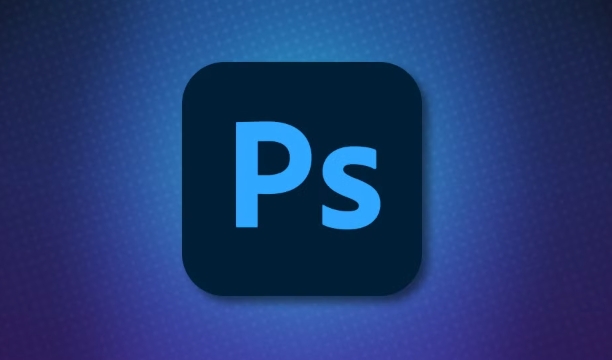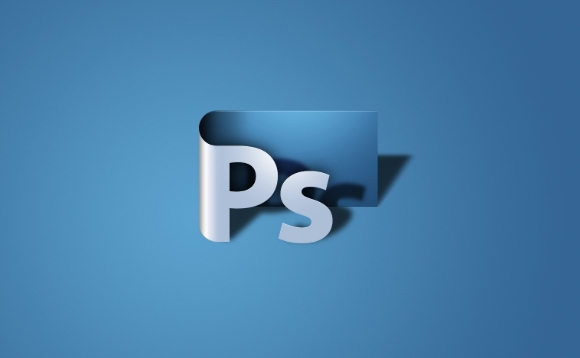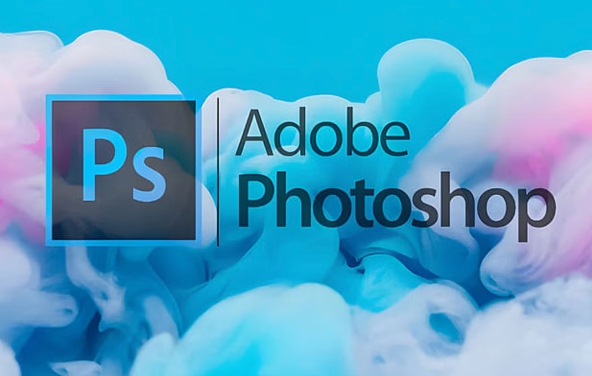Can modify text but need to be operated according to situations. 1. When the text layer is editable: After confirming that it is an independent text layer, use the text tool to directly modify the content, pay attention to keeping the font consistent and adjusting the color to match the original picture; 2. When the text is rasterized or picture format: use imitation stamps and repair tools to cover the original characters, or use a brush to make up the background and create a new text layer; 3. Use AI functions to assist: such as generating fill to remove the text and complete the background, or use plug-ins to identify the text content. Notes include retaining the original font, adjusting anti-aliasing and proportions with low-resolution pictures, and overall operation requires patience and careful avoidance of flaws.

Changing text is actually a very common need in Photoshop, but many people are confused as soon as they come, especially non-designers. Simply put: it can be changed, but it depends on the situation . If the pictures made by yourself and have text layers, it's easy to do; if the pictures and text given by others are rasterized, it's a little more trouble.

The following are several common situations and tell us how you can operate.

The text layer can still be edited
This situation is ideal - when you open the PSD file, you see a separate text layer (Layer), rather than a merged picture.
- Confirm whether it is a text layer: Double-click the thumbnail in the layer panel. If the text color and font settings pop up, it is editable text.
- Modify method: Select the text tool (T icon), click the text content to type and modify it directly.
- Notes:
- The fonts should be consistent, otherwise the layout will be easy to mess.
- The color can be adjusted by double-clicking the text layer, or using the straw tool to select the original image color.
This situation changes quickly, and the source file you save yourself or the customer provides an editable version.

Text is the situation after the image/merge layer
This is the problem most people encounter: the picture is in JPG/PNG format, or the PSD has merged the layers, and the text becomes part of a picture.
At this time, you cannot "typing and replace" directly, and you need to handle it manually:
- Use imitation tools to cover the original text : for example, imitation stamp tool (S key) or patching tool, copy the content around the text and cover it.
- Fill the simulated background with brush color : If the background is solid or gradient, you can brush off the original characters and then add the background.
- Add mask or new layer to write new text : cover the original characters, and create a new text layer to write new ones.
This process tests skills, especially when the background is complicated, the picture editing must be meticulous, otherwise you will see the flaws at a glance.
Use AI functions to assist in modification (new version of PS)
Now the new version of Photoshop has some AI functions, which is also helpful for text modification.
- Generative Fill : You can box and select text areas, and then let the AI help you "remove" the text and automatically complete the background.
- Text recognition plug-in (such as Adobe Firefly) : Some plug-ins support identifying text in pictures and exporting them as editable text for your convenience in reference.
However, these functions are not omnipotent. Sometimes AI will make mistakes in structure or color, and it still needs to be manually fine-tuned.
Tips & FAQs
- If it is a Chinese poster or English advertising picture, try to retain the original font, otherwise the style will be incompatible.
- Not sure about the font? You can use the "Match Font" function (right-click text layer → Match Font), and PS will try to recognize the current font.
- The picture is too small and has low resolution, so the text looks blurry after changing it. Remember to adjust the anti-aliasing and size ratio.
Basically these methods are just the ones, not particularly difficult, but there are many details, so you will be exposed if you are not careful. When encountering complex pictures, take your time and don’t rush to get it done in one step.
The above is the detailed content of How to edit text in Photoshop. For more information, please follow other related articles on the PHP Chinese website!

Hot AI Tools

Undress AI Tool
Undress images for free

Undresser.AI Undress
AI-powered app for creating realistic nude photos

AI Clothes Remover
Online AI tool for removing clothes from photos.

Clothoff.io
AI clothes remover

Video Face Swap
Swap faces in any video effortlessly with our completely free AI face swap tool!

Hot Article

Hot Tools

Notepad++7.3.1
Easy-to-use and free code editor

SublimeText3 Chinese version
Chinese version, very easy to use

Zend Studio 13.0.1
Powerful PHP integrated development environment

Dreamweaver CS6
Visual web development tools

SublimeText3 Mac version
God-level code editing software (SublimeText3)
 How to create a custom brush in Photoshop
Jul 08, 2025 am 01:01 AM
How to create a custom brush in Photoshop
Jul 08, 2025 am 01:01 AM
The steps to create a custom brush in Photoshop are as follows: 1. Select a pattern with clear edges and suitable for brushes, such as hand-painted textures or photo parts, and adjust it to the appropriate size; 2. Use the "Magic Wand Tool" or "Quick Selection Tool" to remove the background to ensure that the pattern is in an independent selection; 3. Create a basic brush through "Edit > Define Brush Presets"; 4. Adjust the parameters such as "Shape Dynamic", "Scatter", "Text" and "Transfer" in the "Brush" panel to make the strokes more natural; 5. Finally, click "Save As Brush" to save as a .abr file for convenience of subsequent use and sharing.
 How to use the quick selection tool in Photoshop
Jul 06, 2025 am 12:01 AM
How to use the quick selection tool in Photoshop
Jul 06, 2025 am 12:01 AM
Photoshop's quick selection tool is suitable for selecting areas with similar colors and clear boundaries. The usage methods include: 1. Find and activate the tool, right-click or long-press to switch or press the shortcut key W to ensure that the layer is unlocked; 2. Adjust the brush size, combine the Alt or Option key to switch the selection mode, Shift key to add selection, and improve accuracy through the option bar setting sampling method; 3. Use the "Select the Subject" function to assist in selection, and then manually optimize edge details, especially suitable for portraits or product images.
 How to recover a corrupted AutoCAD file?
Jul 09, 2025 am 01:16 AM
How to recover a corrupted AutoCAD file?
Jul 09, 2025 am 01:16 AM
When AutoCAD file is corrupted, you can take the following steps to try to restore: 1. Check the automatic backup of the file, check whether there is a .bak or .sv$ file in the folder where the original .dwg file is located, and rename the .bak file to .dwg to open it; 2. Use the RECOVER command to try to repair the file, and if it fails, use the -OPEN command to open the file for partial recovery; 3. Use third-party tools such as DataNumenDWGRepair, RecoveryToolboxforDWG, etc. to deal with seriously damaged files. To prevent future damage, you should save regularly and use "Save As" to refresh the file structure, keep the software updated, avoid saving through network drives, enable automatic save and set up
 How to fix remote desktop connection issues
Jul 08, 2025 am 01:03 AM
How to fix remote desktop connection issues
Jul 08, 2025 am 01:03 AM
Remote Desktop connection problems can be checked through the following steps: 1. Check the network and firewall settings to ensure that the TCP3389 port is open; 2. Confirm that the remote desktop function is enabled and supported by non-home version systems; 3. Verify user permissions and belong to the "RemoteDesktopUsers" group or administrator; 4. Handle black screen or lag, adjust the display options or restart the remote computer. Check them one by one in order, and most problems can be solved.
 AutoCAD 3D modeling tutorial
Jul 10, 2025 pm 12:20 PM
AutoCAD 3D modeling tutorial
Jul 10, 2025 pm 12:20 PM
Friends who are just beginning to get involved in AutoCAD3D modeling can start with the following steps: 1. Start practicing from basic geometry (such as cubes, cylinders, spheres), use BOX, CYLINDER, SPHERE and other commands to build simple models and combine them into complex structures; 2. Master Boolean operations (UNION merge, SUBTRACT cutting, INTERSECT intersection) to create solid models with holes or combined structures; 3. Pay attention to the settings of the view and coordinate system (UCS), switch the view angle to understand the structure, and ensure the correct operation direction by adjusting UCS; 4. After completing the modeling, it can be exported to STL, STEP or IGES format for easy printing or sharing, and use SECTIONPLANE
 How to get Photoshop for free
Jul 12, 2025 am 12:34 AM
How to get Photoshop for free
Jul 12, 2025 am 12:34 AM
Adobe Photoshop does not have a permanent free version, but can be legally used in the following ways: 1. The official website provides a 7-day free trial, complete functions but automatic renewal is required; 2. Use a simplified version based on the browser (Beta), which supports basic editing functions; 3. Students or teachers can obtain a full-featured version through the school education plan; 4. Consider alternative software such as GIMP, Photopea, Krita or Canva Pixlr to meet daily needs. The above methods can meet the needs of different users and ensure legal and compliant use.
 How to warp an image in Photoshop
Jul 10, 2025 am 11:49 AM
How to warp an image in Photoshop
Jul 10, 2025 am 11:49 AM
The key to distorting pictures in Photoshop is to master three common methods. First, use the "Warp" function to freely adjust the image shape. Press Ctrl T to call out the transformation box and select "Deformation", and bending and stretching by dragging the points on the image; Second, use the "Liquefaction" function to perform local deformation, select the layer and enter the "Liquefaction" window, and use the "Forward Deformation Tool" to brush the target area, which is suitable for face slimming or adjusting details; Third, use "Twisting" or "Performance Deformation" to make the picture fit the spatial angle, and select the corresponding mode after calling out the transformation box and drag the corner matching screen. These methods are suitable for different scenarios and need to be flexibly applied according to actual needs.







